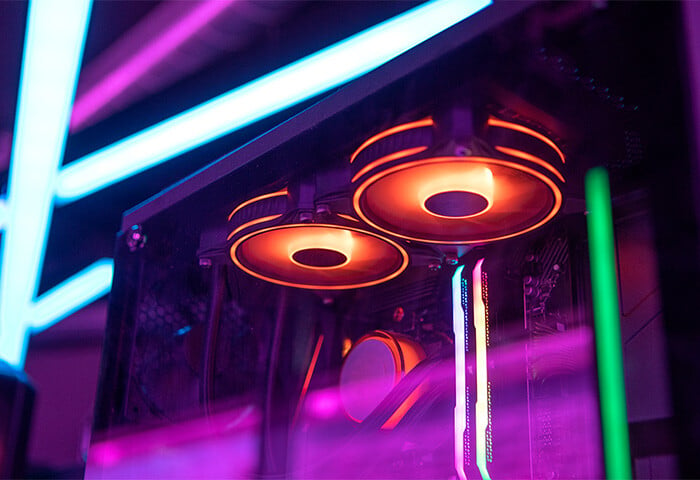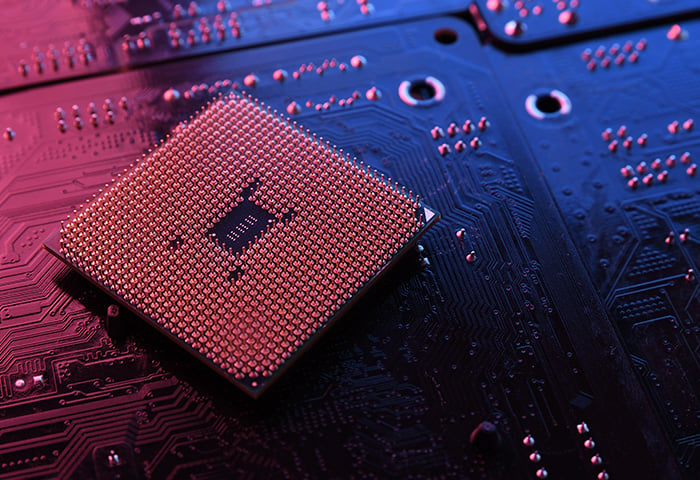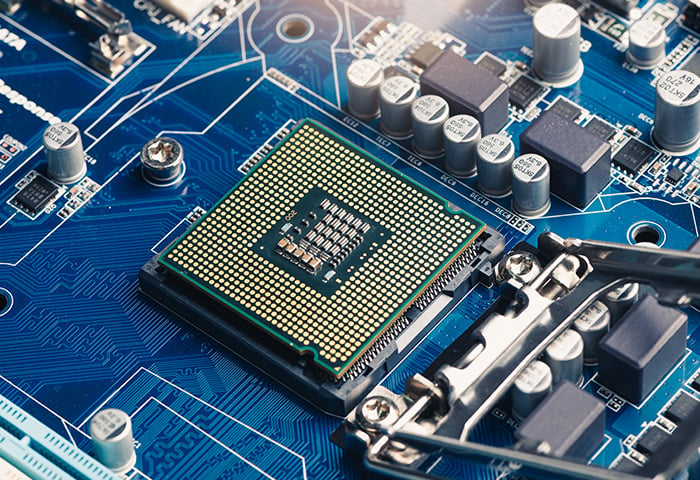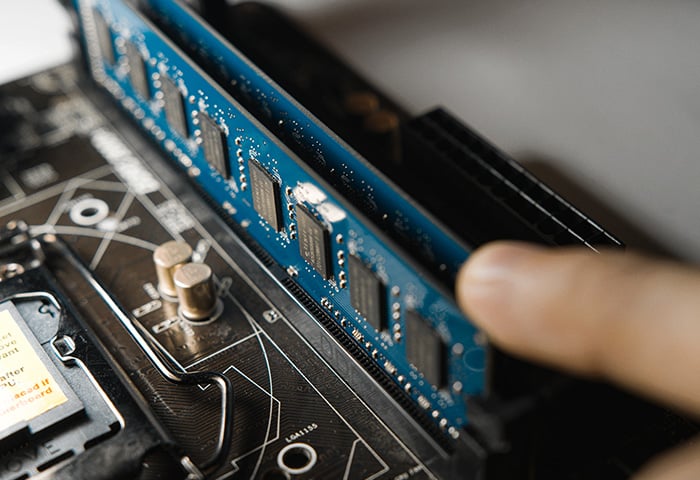If you find yourself wondering “why is my internet not working”, AVG is here to help by telling you how to fix your internet connection. As best we can.
First: save this article!
We want to help you fix your wireless internet, but since this article is on the internet, well… you can see why that might be a problem. So if you have a printer, start by printing this out, or at the very least saving this page to your desktop by clicking Ctrl+S. That way even if your internet cuts out, you’ll be able to reference this article.
Got it saved? Good. But before we can start fixing your Wi-Fi, there’s something else we need to ask first:
Why is your Wi-Fi not working?
You can’t cure an infection until you know what bug you’ve got, and likewise you can’t fix the Wi-Fi until you know why it went down in the first place. Fortunately, in cases like these, there’s only one of three things to blame: your device, your network, or the internet itself.
Your device
First, check if your other smart devices are still connected to the internet. If they are, you know that the problem is localized to just that one device, which saves you some trouble. Go ahead and scroll down to the How to fix Wi-Fi on a device section below.
Your network
We always tell you not to connect to public networks unprotected, but just this once, go ahead and find the closest working Wi-Fi network — a friend’s house or a friendly coffee shop — and see if you can get online. If you can, that means the problem is with your network, not the device. Skip down to the How to fix your Wi-Fi network and internet issues section.
The internet itself
But what if your device can connect to your network just fine — it just can’t reach any websites? First, try to go to a wide selection of different websites to make sure the issue isn’t on their end (for example, there’s not much you can do if your favorite website is being DDoS’d) but if absolutely no websites are working, head over to How to fix Wi-Fi network and internet issues. But be aware you might just need to make a call to your ISP.
Note: if your internet is working but is just too slow, there are also ways to speed it up.
A few more quick things to check
Before we go into the more complex solutions, try some of this simpler stuff first. It just might save you a huge headache.
Check the lights on your router
Seriously, give that box a look. If any lights seem different, that’s a sign something’s wrong. If you don’t look at the router enough to know what would be different, dig out the instruction manual and give it a read: it’ll clue you in on what each light means, and what you can do about any problems.
Move closer to the router
In big houses especially, or places with lots of interference, it’s possible your wireless connection just isn’t strong enough to reach your device. If moving closer helps, then there’s hope! There are many ways you can boost your Wi-Fi signal strength.
Plug in an Ethernet cable
This won’t work for most mobiles, but if your problem device has an ethernet port, plug an ethernet cable into your router (most routers come with at least one) and put the other end in your device. If the internet works, you know the issue is with your wireless signal… which is a good place to start.
Is it an “always” problem, or a “sometimes” problem?
If your wireless just randomly cuts out and comes back, it probably means your router or your device have some bad software that’s causing the problem. If it happens across all your devices, giving your router a firmware update might help (it’s good for your security, too!), and if it only happens with one device, consider updating its wireless drivers. But we’ll talk more about that in the next paragraph.
Is your software and hardware up-to-date?
It can be hard to figure out if your software or hardware is up-to-date, especially if you find yourself unable to go online. For software, it’s best and easiest to install a driver updater, which will automatically check your drivers and install any available updates. But if you can’t get online, or the issue is with outdated hardware, you’ll need to consult an expert who can get you the parts you need or install the drivers offline.
The same applies for router issues: while it’s possible to manually update your router’s firmware (we’ll show you how later in the article), you still might need to call your ISP or an expert if you can’t go online to get those firmware updates, or if the issue is with your hardware.
Is the Wi-Fi even turned on?
We know, we know, it’s a silly question, but sometimes we can turn the Wi-Fi off, or Airplane Mode on, by accident. Do a quick check to make sure that’s not the problem before you pull any more of your hair out.
Run a ping test
When you go online, you’re sending lots of tiny packets of data to a distant server, which is also sending back tiny packets of data. That’s how your PC communicates with websites. A ping test is a way to make sure all those tiny packets are making it to their destination — which can be extremely useful in diagnosing the problem. Here’s how to run a ping test:
For Windows 10
-
Click the Start button, and type “Cmd”. This should bring up the Command Prompt app, which you should click.
-
A black, mostly-empty box with a flashing cursor will show up. Type “ping”, then press space.
-
You’re ready to do your test. Keep reading below.

For Mac
-
Open up Spotlight and type “network utility” in the search bar.
-
Double-click the Network Utility app to open it up.
-
Find the Ping tab, click it, then find the blank space for inputting a web address.
-
You’re ready to do your test. Keep reading.
Okay — from here, you (both Windows and Mac users) can type any web address you want and it will perform a ping test. However, if you want to diagnose the problem, you’ll want to test these three addresses:
-
8.8.8.8: This is the IP address for Google’s Public DNS (Domain Name Server). If it’s not working, that means the TCP/IP settings are not working on your computer. Visit the How to fix your device’s Wi-Fi section of this article for more details.
-
127.0.0.1: This is your computer’s own IP address. If it doesn’t work, that means there’s something wrong with your network adapter or connection settings. Read the How to fix Wi-Fi network and internet issues section.
When you run the test, if it’s working, you’ll get a string of letters and numbers you don’t really need to understand. If its not working, you’ll get an error message that says something like “Request timed out”, “Destination host unreachable”, or “Transmit failed, error code #”. If you see those messages or anything similar, you’ve taken the first step towards identifying your problem.
How to fix Wi-Fi network and internet issues
Alright, it’s time to roll up our sleeves and start addressing the problem of your router not working. But a lot of the solutions we’re going to discuss will necessitate that you access your router and Wi-Fi, so the first thing we have to do is figure out how to do that. You ready?
First, check your router itself
If you’re lucky, your router will have a stricker with an IP address and a password that will make it easy to access its inner workings. If you find that sticker, just put the IP address in the address bar of your preferred browser, and put in the username or password on the sticker. It’s not impossible, if this is the first time you’ve done this, that it’ll ask you to update your username and password as well. Make sure you don’t forget them: they’re very important.
But if you do forget them...
What if I don’t have my router’s username and password?
First of all, check all the paperwork that the router came with: there’s very likely a manual that has it written down somewhere. But if you can’t find it, or you threw out all that paperwork early, never fear! There’s still a solution you can use.
Access this list of default routers and passwords, find your router model, and use the username and password on the list. If you can’t find it: just try “admin” for the username and password, or “password” for the password. There’s a better than good chance those will work. Fun fact: this list is also why it’s so important we update your router’s username and password! You don’t even have to be a hacker to Google a list of default usernames and passwords and mess around with someone’s router.
Anyway. If you or someone else has updated your router’s username and password and you just can’t remember what it was, you still have hope. Find the reset button on your router, then hold it for about 10 to 20 seconds. This will reset it back to factory settings, including bringing back the default username and password. It’s also not impossible that the reset could fix your problem.
Figuring out your router’s IP address
Okay, so there’s no sticker to help you. No worries. This just adds an extra step to things.
For Windows 10 PCs
-
Click the start button in the corner and type “View network status” (just type, your computer will read it). This should bring up the View network status and tasks option. Click it.
-
In the upper right you’ll see your current connection, with some bars to represent the signal strength. Click the link next to it.
-
A Wi-Fi Status box will pop up. Click the Details button.
-
Okay, you’ll be seeing a lot of confusing text right now. Ignore almost all of it: all you care about is IPv4 Default Gateway. Find that, then find the numbers next to it. Write those down — including all the dots!
For Macs
-
Crack open Spotlight and search for “System Preferences”. Click System Preferences.
-
Find the Network button and give it a click.
-
You should see some connections on the left. Find the one you’re currently connected to, make sure it’s highlighted and the light next to it is green, then click the Advanced button.
-
Under the TCP/IP tab, you’ll see a Router secton, followed by some numbers and dots. Write those down — including the dots.
Once you have your numbers and dots, which would be the router’s IP address, all you have to do is open up your browser and put it into the address bar. That’ll take you to your router’s login page.
Don’t know your router’s login credentials? Check the section above.
So you know how to get into your router. Perfect. Now we can actually start troubleshooting.
Did you turn it off and on again?
Technology is weird. Sometimes all it needs is a little kick in the rear to get back in gear. Physically turn your router and/or modem off, wait five to ten seconds, then turn them back on again. Give them some time to warm back up and see if anything is fixed. If it is, great! Glad we could help.
...but if it keeps not working and you have to keep turning it off and on again to make it work again, then you’ve got a bigger problem. You’ll probably need to get a new modem and/or router.
Change the wireless channel
Wireless networks aren’t magic. They rely on ‘channels’ to travel through the air, and some channels are better than others — especially in crowded areas where there are lots of competing devices. Changing the channel your wireless operates on could not only fix your Wi-Fi connection, it could also make it faster… if you’re lucky.
Anyway, log into your router using the steps detailed above, then find the Wireless Settings page. We’d like to help you find it, but every router has a different setup so you might need to do some digging. Once you find it, you should see a lot of ways to adjust your wireless signal. For the time being, find the option that says Channel: it’ll probably be next to a drop-down menu and have numbers written down in GHz. Pay careful attention to what channel you are on currently.
From here, just try a new channel — any new one will do — and apply the change. Give it a few minutes to see if anything changes, then try again with another new channel.
If you discover a new channel works, great! Enjoy the net! But if changing it around doesn’t work, remember to return the channel to the one you started on before you try a different fix. If you don’t, you could fix the Wi-Fi and not know it because the new channel you left it on doesn’t work.
Update your firmware
Technology relies on both hardware and software to do its job: and where the two mix, you have firmware — because it’s a little hard, but a little soft too. Pinnacle naming. Many devices will automatically update their firmware when they detect that a new update for it has been released, but routers typically need to be updated manually… which could address any connectivity issues you’re having.
First, log into your router using the method detailed above. Then, you’ll need to do some digging to find a tab or section called Firmware, Router Upgrade, Update, or something similar. It’ll be different depending on which router you’re using, so if you’re not sure, give it a look just in case.
When you eventually find it, it should clearly list the current Firmware version, and have a button that says something like Check, Scan, or Update. Give it a click and see if there’s any more recent firmware you could install: sometimes it’ll download the update for you, other times it’ll ask you to click some links and do it manually. Just follow the instructions.
But let’s say you can’t find the firmware page, or there’s no helpful buttons. Don’t despair: double-check the model of your router, then go to the manufacturer's website. They should have a support page or site where you can download the latest firmware for their drivers. And if they don’t… well, you’ve got a really crappy router, then.
Consider replacing it.
Check the cables
Go to your router, and see that everything is plugged in the way it should be. If it’s not, fix it, and see if that helps things run again.
With luck, that’s all there is to it.
Check your DHCP settings
DHCP — or Dynamic Host Configuration Protocol — is a system that quickly and automatically distributes IP addresses across the network. IP addresses are important, as they’re the key ingredient to letting devices connect and communicate over the internet, so if something is wrong with your DHCP, your internet is not going to work great, if at all.
First, we gotta make sure it’s turned on at all.
For Windows 10
-
Open up the Start menu and type “Settings”. Click the Settings button.
-
Click Network & Internet.
-
If you’re on wireless, click the Wireless tab on the left. If you’re connected via Ethernet, click the Ethernet tab.
-
You should see your current connection. Click on it, and another window will open up.
-
Under IP Settings, you’ll see an IP assignment option. If it says Automatic (DHCP), it’s turned on.
-
If it doesn’t, click the Edit button under to it and select Automatic (DHCP).
-
See if your internet is any better.
For Mac
-
Open up Spotlight and search for “System preferences”. Click System preferences.
-
Find and click the Network button.
-
Make sure your network is highlighted and has the green dot next to it, then click the Advanced button.
-
Click the TCP/IP tab.
-
The first option you should see is Configure IPv4. If it’s not currently showing Using DHCP, click on the drop-down menu and select it.
-
See if your internet is any better.
If this doesn’t work, there’s still one more thing you can do: you can adjust how DHCP works in your router itself. But this should either be done as a last resort, or something you try before doing a full factory reset of the router itself (which we’ll go into in the next section), unless you really know what you’re doing.
First, login to your router using the steps detailed above, then poke around until you reach the router’s settings. Each router is set up differently so you might need to do some digging to find it. Once you do, you should try to find something called “DHCP Server Settings”. Here, you can turn it on and off, and mess with some other stuff, which may include….
-
Start IP Address: Is the IP address of your router. Changing it won’t help, so you should leave it alone.
-
Maximum # of users: Basically decides how many IP addresses the DHCP will handle at once. If you’ve got 50 really invasive neighbors this might be worth lowering, but otherwise it’s good to keep it at the default value.
-
IP Address Range: Tied to Maximum # of users, this will show the range of numbers your DHCP will draw on when distributing new IP addresses. If you notice that the possible range is less than the maximum # of users, something is wrong: it means an IP address could be overlapping, which will cause problems.
-
Client Lease Time: Client Lease Time lets you decide the maximum amount of time a device gets a certain IP address before it either needs to be renewed, replaced, or dropped entirely. If you have a lot of devices on your network, you might need a shorter lease time so IP addresses aren’t being hogged. If you have few devices, a longer lease time could help things run better. This might help fix issues with intermittent connectivity.
-
DHCP Reservation: This lets you “reserve” a specific IP address in your IP address range for a specific device. If you decide to set one up, you’ll also need your device’s Physical (or MAC) address, which you can find by checking the Properties of your wireless or ethernet connection.
But again: you should leave all that as a last resort.
Do a factory reset of your router
Kind of like turning it off and on again taken to the logical extreme, this will return your router to its out-of-the-box factory settings. If your router has only recently been causing problems, this just might solve the problem, but if you made any changes to your router settings, these will all be lost, too.
It’s fairly easy to do. Every router will have a reset button, which is sometimes hidden in a tiny hole in the back, which you’ll need a pin or something to reach. Find it, press it, and hold it for ten to twenty seconds. This will do the trick. Give the router time to set itself up and see if that fixes the problem.
Toy with your network adapter
If you did the ping test we mentioned above and you got an error trying to ping your own IP address, it could mean your network adapter is messing up. Typically, restarting your computer or enabling DHCP (see above) will remedy this, but sometimes it might not be enough.
Update the drivers
One thing you can try is updating the network adapter driver. Macs do it automatically, but for Windows it’s still a fairly painless process. But, you’ll need access to the internet. Just open the start menu, type “device manager”, and click the Device Manager button that shows up. Scroll down to the Network adapters option, click it, then right click your adapter. You should be able to check for any updates, and install any new drivers.
Actually clean it
If you’re using a proper desktop PC, you could try cracking open your desktop case and unplugging the network adapter itself.
A wireless one will look like this:

And a wired one will look like this:
 The safest way to identify it is based on where it’s plugged in: if it’s got a port pointing out where you could screw in antenna (as in the first example) or plug in an ethernet cable (as in the second), that would be what you’re looking for. If you’re comfortable doing this, then you can try turning off your PC completely (and I mean completely unplugged and off, not just asleep), removing the network adapter, and cleaning it out with some canned air. And it has to be canned air: using a cloth or a vacuum can damage the part.
The safest way to identify it is based on where it’s plugged in: if it’s got a port pointing out where you could screw in antenna (as in the first example) or plug in an ethernet cable (as in the second), that would be what you’re looking for. If you’re comfortable doing this, then you can try turning off your PC completely (and I mean completely unplugged and off, not just asleep), removing the network adapter, and cleaning it out with some canned air. And it has to be canned air: using a cloth or a vacuum can damage the part.
Plug it back in, turn back on your PC, and see if that’s helped. But even if it didn’t, at least you have a slightly cleaner PC.
It’s also technically possible to do this with laptops, too, but we wouldn’t recommend it unless you’re a pro. This might also invalidate your warranty if you’re using an Apple desktop, so don’t try it on a Mac.
Contact your ISP
Alright. If none of the above fixes have worked, it’s come to this. It’s time for you to actually call your Internet Service Provider and ask them for help. We know, it sucks, but you gotta do what you gotta do.
Plus, if you’ve tried even some of the steps above, you’ll no doubt save yourself time and headaches, because you can explain to the person you’re talking with what you’ve already tried, which will make it much easier for them to figure out the problem and offer useful suggestions.
How to fix Wi-Fi on a device
So the problem isn't with your router itself. That’s great! Fixing the Wi-Fi for an individual device can be a whole lot easier… sometimes. So grab the problem device and let’s give this the ol’ college try.
Reset your device
No, I don’t mean closing it and opening it again, or just putting it to sleep. I mean actually turning it off, then back on again. You’d be surprised how often this fixes not only Wi-Fi problems, but all kinds of tech issues. It’s also super easy to do, so it’s worth giving this a try before you attempt anything else.
If that doesn’t help, you can also try a few tricks to clean and speed up your PC, which could be what your PC needs to play nice with the Wi-Fi again.
What about a factory reset?
If your device used to connect to the internet but it doesn’t anymore, a factory reset might fix the problem, but only if the issue is with the software, rather than the hardware. Plus, it will most likely come at the cost of all the personal files you have saved on it, and will take a considerable amount of time, so only do this if you’ve safely backed up all your files and you’ve tried everything else.
On the bright side: if you factory reset the thing and it’s still not working, you’ll know for sure the problem is with the hardware… and if you intend to just get a new device, then your current one will already be in a recycle-safe state. Silver linings!
For Windows 10
-
Open up the Start menu and start typing “reset”.
-
Click Reset this PC.
-
Under the Reset this PC section, click Get started.
-
You’ll have the option to keep your personal files or not. We suggest you try keeping them first, but make sure you have a backup ready anyway.
-
Your reset will begin. Make sure your PC remains plugged in, otherwise you risk causing errors.
For Mac
-
First, make sure you’ve done your backups.
-
De-authorize your iTunes account, as well as any other third-party app that has limited installs, since a freshly reset Mac will be counted towards your limit.
-
It’s fairly easy for iTunes, at least: open up the app, then click Account.
-
Click Authorisations, then De-authorise This Computer.
-
Enter your login details and you’ll be good to go.
-
Open up your Mac in recovery mode by restarting it, and holding down the Command and the R key while it’s booting up.
-
Click Disk Utility, then Continue.
-
Select the main volume then click Unmount then Erase.
-
Quit, then follow the instructions to reinstall your operating system.
For Android
-
Backup your data (you can do it from the cloud fairly easily).
-
Tap the app drawer.
-
Find and tap the Settings icon.
-
On the left pane, tap Backup and reset.
-
On the right pane, uncheck the Back up my data and Automatic restore checkboxes. Otherwise after you do the factory reset it might simply bring all your data back.
-
Then tap the Factory Reset option and follow the instructions.
For iOS
-
Go to General.
-
Then go to Settings. You’ll find an option called Reset. Tap that.
-
Look for an option called Erase All Content and Settings.
-
Click that, then enter your credentials.
-
Your phone will be wiped.
Run a network diagnostic
Network diagnostics, or troubleshooting, has a bad but not unfair reputation for being moderately useless. But they’re easy to do, harmless, and will occasionally solve the problem for you, so it’s worth giving it a go anyway.
For Windows 10
-
Right-click your wireless symbol in the bottom-right corner of the screen.
-
Click Troubleshoot problem.
-
Follow the instructions.
For Mac
-
Go to your Apple menu and click System Preferences.
-
Click Assist Me, then click the Diagnostics button. That’ll open the Network Diagnostics tool.
-
Click Continue and follow the instructions.
Macs can also run a much more in-depth diagnostic, which might solve your problem.
-
If you’ve got anything plugged into your mac other than a mouse, keyboard, display, the power cord, and an ethernet cable, unplug that stuff.
-
Turn your Mac off, then on, and immediately press and hold the D key.
-
Hold it until you see a screen that asks for your language. Pick one, preferably one you understand.
-
It’ll spend a few minutes testing some things. Follow the on-screen instructions.
For Android & iOS
If your Android or iPhone won’t connect to Wi-Fi, there’s a spot of bad news: neither mobile operating systems come with built-in network diagnostic tools. But you can download apps that will serve the same purpose. For Android, try Network Analyzer, and for iPhone, consider using Pingify.
Check your Wi-Fi password
It’s not unheard of for devices to forget or even mis-remember the Wi-Fi password you’ve already put in there, typically as the result of some bug or error. So try going back into your wireless settings and checking if everything is still the way it should be.
It’s technically possible to do this on Android/iOS devices, but you either need to A) Root and/or Jailbreak your devices, which is risky and can void your warranty, or B) download apps that aren’t available on official storefronts as they violate terms and service, which is a security risk. Therefore, we’ll only show you how to do this on Windows and Mac.
For Windows 10
-
Click the start button in the corner and type “View network status”. Click the View network status and tasks option that shows up.
-
In the upper right you’ll see your current connection, with some bars to represent the signal strength. Click the link next to it.
-
A Wi-Fi Status window should have popped up. Click Wireless Properties.
-
Click the Security tab.
-
There, you’ll find your security type, as well as the password. Click Show characters and make sure the password matches your records.
For Mac
-
Open up Spotlight search and type “Keychain Access”. Click the app that comes up.
-
In the bottom left, you should see some categories. Make sure Passwords is highlighted, then double-click your network on the list. You can use the search in the corner to find it, if you know the name.
-
Click Show Password on the bottom. You might need to enter the administrator username and password.
-
Check that the password matches your records. If it doesn’t, update it and try again.
Reset your TCP/IP settings
If you did the ping test mentioned above and you couldn’t reach Google’s Public DNS, then this is the step you need to take. It also might be worth doing anyway, since it won’t exactly harm your PC or Mac to try.
For Windows 10
-
Open up your start menu and search for “cmd”.
-
Right-click Command Prompt and click Run as Administrator.
-
A black box with a flashing cursor will open. Type “netsh int ip reset”, without the quotation marks, and hit Enter.
-
Wait a bit for it to finish running, then restart your PC. See if that helps.
For Mac
-
Click the Apple icon in the top-right hand corner and click System Preferences.
-
Select Network.
-
Find your current network, make sure it’s highlighted, then click Advanced.
-
Find the TCP/IP tab, click it, then click Renew DHCP Lease.
-
Hit “Ok” and see if that worked
Remove and re-add the wireless network
This is kind of similar to restarting the network: sometimes, your device just needs to be jostled a little bit before it can work right again. It’s also refreshingly easy to do.
For Windows
-
Left-click on your wireless icon in the bottom-right hand of the screen.
-
All the available wireless networks will pop up. Right click on your current connection and click Forget.
-
You’ll lose your connection, but if you check the list of available wireless networks, you should still see it there.
-
Left-click it and press connect. You may need to put your credentials back in.
-
See if that works.
For Mac
-
Click the wireless icon in the top of the screen and select Open Network Preferences.
-
Highlight Wi-Fi from the options on the left, then click the Advanced button.
-
Click the Wi-Fi tab then find your current connection in the Prefered Network list.
-
Click it, hit the - button in the bottom, then the Remove button in the following pop-up.
-
Press Ok to leave the menu, hit Apply, and then try to rejoin the network by clicking the Wi-Fi button on the top right of the screen. You may need to put your credentials back in.
For Android
-
Tap your Settings icon.
-
Tap Wi-Fi.
-
Find your current connection, touch and hold it until new options pop up. Click Forget network.
-
Try to re-join the network and see if that helps. You may need to input your credentials again.
For iOS
-
Tap your Settings app.
-
Tap Wi-Fi.
-
Tap the lowercase i button next to your network.
-
Poke at Forget This Network, then close your settings.
-
Try to re-join the network and see if that helps. You may need to input your credentials again.
Clear your browser cache
The browser cache is a little trove of website data that can help you load pages faster, and can also interfere with your connection if something goes wrong. Clearing your browser cache is something done on a by-browser basis, so find your preferred browser on the list below. By the way, cleaning your browser also makes it safer, so even if this doesn’t fix your Wi-Fi, it’s still worth doing.
Google Chrome
-
First, open up Chrome.
-
Click the three dots in the upper-right hand corner.
-
Click History, then on the side menu, hit History… again.
-
A new tab should open up. Look to the left and find Clear browsing data. You can find it with the three bars up top as well.
-
Another new tab will open, as well as a popup. Change the top down menu to All time and make sure the box next to Cached images and files is checked.
-
Click Clear data and see if that helps.
Firefox
-
Obviously, start by opening up Firefox.
-
In the menu bar, click History.
-
Click Clear Recent History.
-
Make sure Cache is checked, and the pull-down menu at the top says All Time.
-
Click Clear Now and see if that helps.
Microsoft Edge
-
Open up Microsoft Edge.
-
Click the three dots on the right side of the web address field.
-
Click History, with the clock-arrow icon.
-
Click Clear history.
-
Make sure Cached data and files is checked, then click Clear.
Opera
-
Open up Opera.
-
Open up the Opera menu on the upper-left side of the screen.
-
Hover over History and click Clear browsing data.
-
Click Cached images and files, then click Clear data.
-
See if that helped.
AVG Secure Browser
-
Open it up, for starters.
-
Click the three dots in the upper-right of the screen, then click History.
-
A new tab will open up. Find and click the Privacy Cleaner tab.
-
Another new tab will open, and a popup. Change the top down menu to The beginning of time and make sure the box next to Cached images and files is checked.
-
Click Clear browsing data and see if that helps.
For mobile devices
Yep, here we go again.
Firefox
-
Crack open that app.
-
Click those three dots in the corner.
-
Tap Settings, and then scroll down to Clear private data.
-
Make sure the Cache has a checkmark next to it.
-
Tap CLEAR DATA.
-
You’re good to go.
Google Chrome
-
Tap that app.
-
Click the three dots in the right corner.
-
Tap History, then Clear browsing data… at the top of the new window.
-
Change the time range to All time.
-
Make sure Cached images and files has a checkmark next to it, then click Clear data.
-
See if that helped.
Microsoft Edge
-
Open it.
-
Click the star-bar thing on the upper-right side.
-
Click the clock-arrow thing. It’s fourth to the right.
-
Click the trash can icon and confirm you want to clear your history.
-
Change the time range to All time then make sure Cached images and files is checked.
-
Click Clear and you’re done.
Opera
-
Open the app.
-
Find the O-menu button on the bottom right and tap it.
-
Click the clock icon, that’s your History, then tap the trash icon on the upper right. Confirm you want to clear your browsing history.
-
That’s actually all. See if it helped.
Remove problem apps and plug-ins
Sometimes, recently installed apps and plug-ins can be the source of your woes, especially if they hog the internet or, god forbid, they’re malware in disguise. Purging your system of them might be enough to get your internet back. You could start by uninstalling the apps and plugins you most recently installed before the problems arose (we’ll talk about that in a sec), or you can try to be more precise and identify which apps might be causing the issue. Fortunately, there’s an easy way to check what apps might be the problem: our old friend, the task manager.
For PCs, you can open up the task manager easily by pressing ctrl + shift + esc at the same time. From there, you’ll see a whole lot of processes: but all you need to pay attention to is the category on the far right, Network. Do you see a really big percentage above it? If so, scroll down and see what apps are taking up so much of your network. If not, your problem is something else.
For Macs, the Activity Monitor serves the same function. You can either find it with Spotlight, or in the Utilities folder. Once you crack it open, you’ll want to tap the Network tab on the top. See if any devices are taking up a lot of your network space: if you find any, those are your problem. Otherwise, this won’t help you fix your Wi-Fi.
For Androids it’s a bit trickier. There’s no easy way to see which apps are currently corrupting your connection, so you’ll need help from a third-party app. We’d recommend GlassWire.
For iOS, start by opening up your Settings, then click Cellular. Find the section with your apps listed with a bunch of switches, and you should also see how much data they use. See if any app is taking waaaaay more data than is reasonable — there’s a good chance that’s your problem app.
But it’s not enough to just find which app is the problem: we also have to remove it. So…
For Windows 10
-
Open up your start menu.
-
Type “Add”. Add or remove programs should be the first suggested option. Click it.
-
Here, you’ll see all the programs you can remove. Find the one you don’t like anymore, click it, then click [Uninstall].
-
Follow the instructions and see if that helps.
For Mac
-
Find the icon or the application you don’t want anymore with Spotlight.
-
Click it, then drag it into the trash bin icon.
-
You can also use the keyboard shortcut Mac symbol + backspace.
-
Right click the trash bin and click Empty Trash.
-
That’s it!
For Android
-
Put your finger on the app icon.
-
Drag it up until it reaches the top of the screen.
-
Well done.
-
If you can’t find the problem app on your main screen, go to your Settings.
-
Scroll down and tap Manage apps.
-
Find the problem app and give it a tap.
-
If it’s non-essential, you should have the option to uninstall it.
For iOS
-
Find the app you don’t like.
-
Hold your finger on it. Soon it’ll start to wiggle. Wait until all the apps start wiggling too.
-
Click on the x that appears in the corner.
-
Confirm that you want to delete the app.
-
If you can’t find an icon for it, go to your Settings.
-
Go to General, then find iPhone Storage.
-
Select the app you don’t want anymore then choose Delete App.
Even if you can’t find any one app that’s causing a lot of issues, your programs can still accumulate residual files and other junk data that slows things down across the board. Getting rid of it all won’t help with the Wi-Fi, but it could help your browser run better.
Update your device and drivers
These are two different things but they both involve updating, so we’re putting them together.
Updating drivers
Outdated drivers can cause all kinds of problems for your PC, including messing with its ability to recognize a wireless signal… but alternatively, sometimes a bad update to your driver can leave it busted until the publisher releases a fix.
Macs, Androids, and iOS devices update themselves automatically. There’s not a whole lot for you to do there. PCs, though, still require manual updates, which will of course require an internet connection of some kind, or hiring an expert to deliver you the updates on a USB device.
While using driver updating software would be best and easiest (like AVG Driver Updater) it’s entirely possible to do it yourself. Just open the start menu, type “device manager”, and click the Device Manager button that shows up. Here, you’ll see all kinds of devices that have drivers: any number of them might need updating, but you should focus specifically on Network adapters, Computer, Disk drives, Bluetooth, Proximity, and System devices. Anything that seems like it could be related to your wireless.
What if the updated driver is the problem?
Frankly, if the issue is that the recent driver update is causing the problem, you’re probably not going to be able to fix it yourself. Some driver updating software (like AVG Driver Updater) have a rollback feature that can un-do problematic patches, but for Android, iOS, Mac, or manually updated Windows devices, all you can really do is wait until a new patch is released. It should happen fairly quickly. Check the website or somewhere to see if a faulty driver could be behind your Wi-Fi issues: if that is the problem, you won’t be the only one suffering.
Update your device
Alright, enough drivers: what about updating the actual device itself? That can sometimes help, although like drivers, you’ll need to get online to make it work.
For Windows 10
-
Open up the start menu.
-
Type “Update”, and click Check for Updates.
-
Click the Check for Updates button again.
-
Follow the instructions and see if that works.
For Mac
-
Go to the Apple menu and click System Preferences.
-
Click Software Updates.
-
It’ll check. Follow the on-screen instructions.
For Android
-
Click on Settings.
-
Scroll down to System, then tap Updater.
-
Click the Check for updates button.
-
Follow any instructions that may follow.
For iOS
-
Click on Settings.
-
Find Software Update under General.
-
If there are any available, it’ll let you know, and tell you how to install it.
Flush out your DNS Cache
Just like a browser cache, a DNS cache is a temporary folder where your computer saves website data so things load faster. Clearing it out might be the kick in the pants your device needs to get back to behaving.
For Windows
-
First, completely close out of all your browsers.
-
Click the start menu and type “cmd”. Click Command Prompt.
-
You’ll see a big black screen. Type “ipconfig /flushdns”, without the quotation marks.
-
Press enter.
-
Try and see if your browsers work now.
For Macs
-
First, close out of your browser.
-
Open up spotlight and search for “Terminal”. Click the Terminal application.
-
Type or copy-paste this string of text into the terminal:
-
sudo killall -HUP mDNSResponder;say DNS cache has been flushed.
-
Press return. You might need to enter your password.
-
See if your browsers work now.
For Android
-
First, visit your settings, then scroll down to Manage Apps. Tap it.
-
Find your web browser on the list and tap it.
-
Tap the Clear cache button.
-
Do that for every browser you have installed and see if it helps.
For iOS
It’s super easy for you: all you have to do is turn your airplane mode on, then off again. Doing that will automatically clear the DNS cache. If that doesn’t work, however, you can try a slightly meatier way to clear the DNS cache: a network reset.
-
Go to Settings, then General, then Reset.
-
Find and tap Reset Network Settings. This will clear your DNS cache, and reset the network settings back to when you first bought the device. This might also help fix the problem.
-
The entire device will reboot. Once it starts up again, see if anything works better.
Disable your antivirus or firewall
Very rarely, obtrusive firewall settings or a bug in your antivirus could get in the way of your internet connection. Obviously you shouldn’t go without either of these essential security tools… but if you temporarily disable them and find your internet works again, then you’ve at least figured out the problem.
In that case, your best bet is to either completely uninstall and reinstall your antivirus, which should reset any settings and fix the problem. That said: if the problem firewall and antivirus is Windows Defender, you can’t exactly ‘uninstall and reinstall’ it, since it comes built-in on just about every Windows device. In that case, you’ll have to temporarily disable it long enough to download another antivirus (might we suggest AVG?), which Windows Defender will ‘defer’ to by default, which should fix the problem.
-
Open up the Windows Defender app. You’ll probably find it as an icon in the lower-right hand corner, or you can search for it in the start menu.
-
Click the gear in the upper-right corner of the app to go to the Settings.
-
Find an option called Real-time protection. Toggle it off.
-
Now, go to the start menu again and search for “settings”. Click Settings.
-
Click Update & Security.
-
Click Windows Security on the list to the left, then click Firewall & network protection.
-
Select your network, then turn Windows Firewall off.
-
Hurry up and install a new antivirus program!
Still struggling?
If you made it all the way through this article and we couldn’t fix your problem — then you’ve probably got a pretty serious issue on your hands. But don’t worry, we’ve got one last trick up our sleeves: AVG Tech Support. Call us anytime at 1-844-234-6038 for a free consultation. Our experts will diagnose your problem free of charge, and if you need our help fixing it, we can do that too, for a fee. And we can fix any issue with any device, not just wireless problems, so next time you find yourself struggling with technology, don’t be afraid to give us a call.
Wrapping up
Everything that makes technology amazing can also make it frustrating and confusing when it doesn’t work right. It sucks when we find ourselves disconnected in a very connected world, but with a little help from experts, a little courage, and a lot of patience, you should be able to fix even the most bothersome problem.
And remember: if you find yourself getting too frustrated — take a walk, read a book, do something to relax and take a breather. It’s good for the soul, and who knows — even just giving it some time might sort the issue out.
Because, to reiterate: technology is weird sometimes.


















